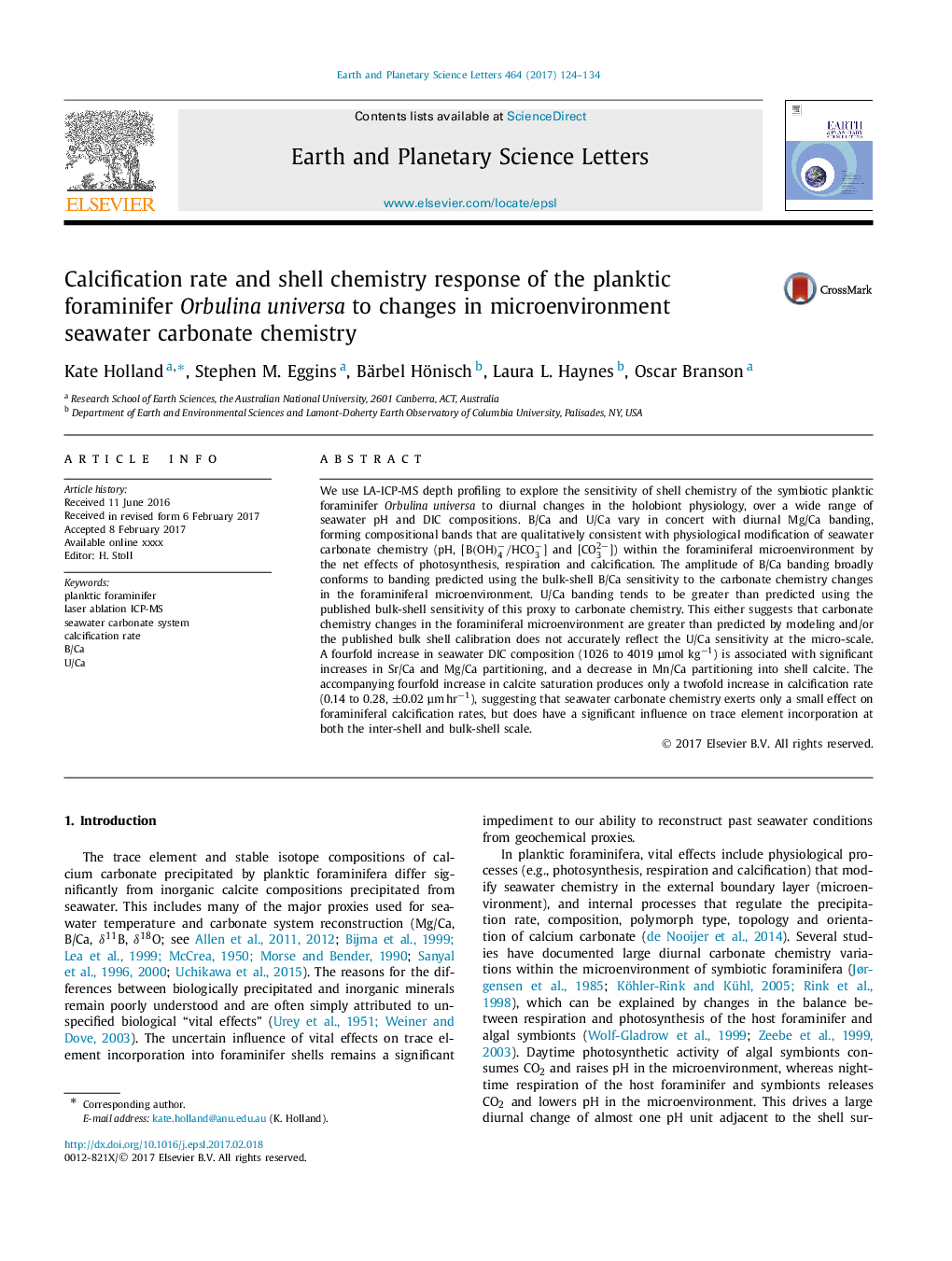| Article ID | Journal | Published Year | Pages | File Type |
|---|---|---|---|---|
| 5779917 | Earth and Planetary Science Letters | 2017 | 11 Pages |
Abstract
We use LA-ICP-MS depth profiling to explore the sensitivity of shell chemistry of the symbiotic planktic foraminifer Orbulina universa to diurnal changes in the holobiont physiology, over a wide range of seawater pH and DIC compositions. B/Ca and U/Ca vary in concert with diurnal Mg/Ca banding, forming compositional bands that are qualitatively consistent with physiological modification of seawater carbonate chemistry (pH, [B(OH)4â/HCO3â] and [CO32â]) within the foraminiferal microenvironment by the net effects of photosynthesis, respiration and calcification. The amplitude of B/Ca banding broadly conforms to banding predicted using the bulk-shell B/Ca sensitivity to the carbonate chemistry changes in the foraminiferal microenvironment. U/Ca banding tends to be greater than predicted using the published bulk-shell sensitivity of this proxy to carbonate chemistry. This either suggests that carbonate chemistry changes in the foraminiferal microenvironment are greater than predicted by modeling and/or the published bulk shell calibration does not accurately reflect the U/Ca sensitivity at the micro-scale. A fourfold increase in seawater DIC composition (1026 to 4019 μmol kgâ1) is associated with significant increases in Sr/Ca and Mg/Ca partitioning, and a decrease in Mn/Ca partitioning into shell calcite. The accompanying fourfold increase in calcite saturation produces only a twofold increase in calcification rate (0.14 to 0.28, ±0.02 μmâhrâ1), suggesting that seawater carbonate chemistry exerts only a small effect on foraminiferal calcification rates, but does have a significant influence on trace element incorporation at both the inter-shell and bulk-shell scale.
Related Topics
Physical Sciences and Engineering
Earth and Planetary Sciences
Earth and Planetary Sciences (General)
Authors
Kate Holland, Stephen M. Eggins, Bärbel Hönisch, Laura L. Haynes, Oscar Branson,
